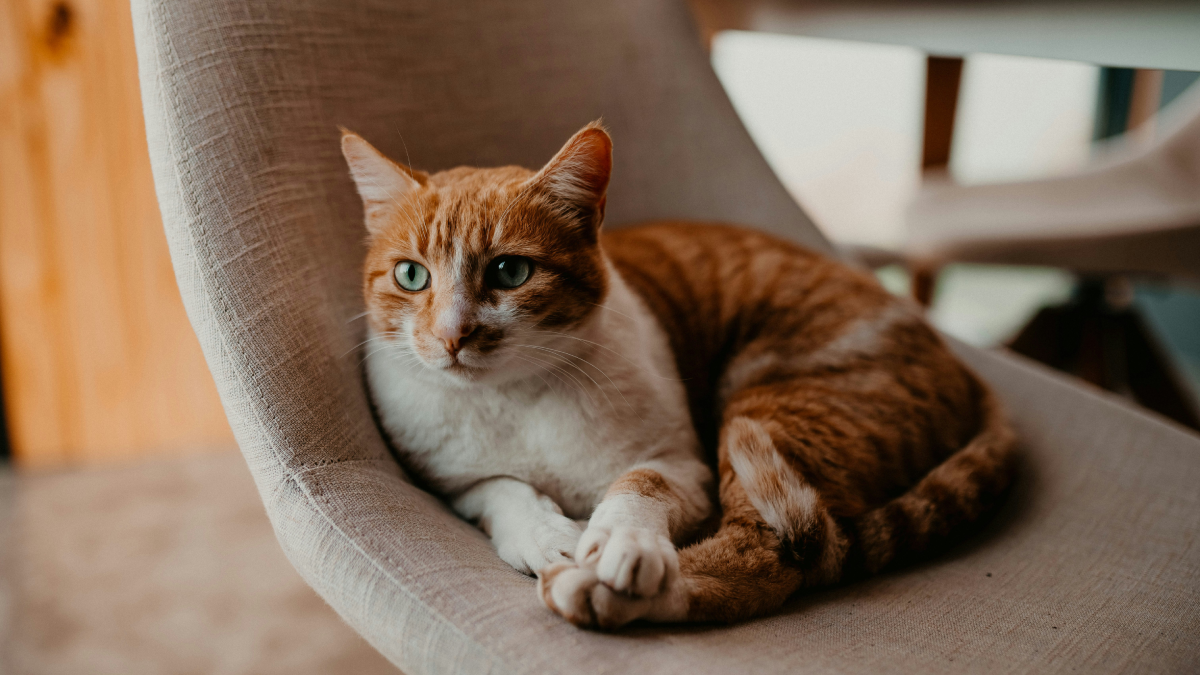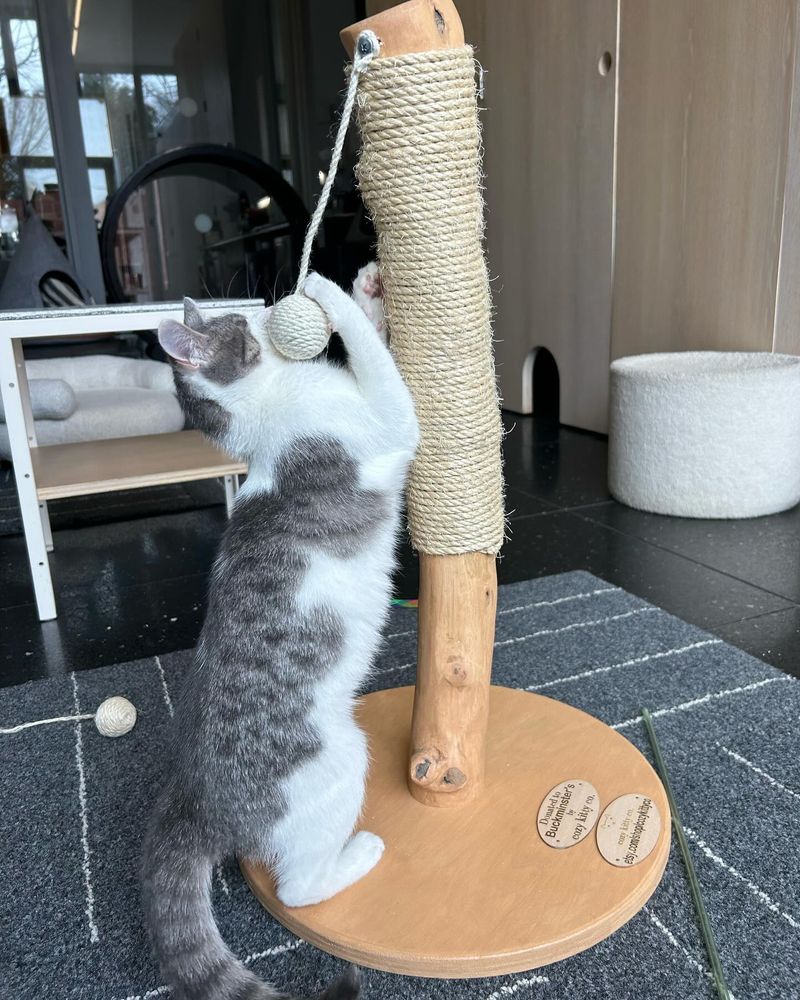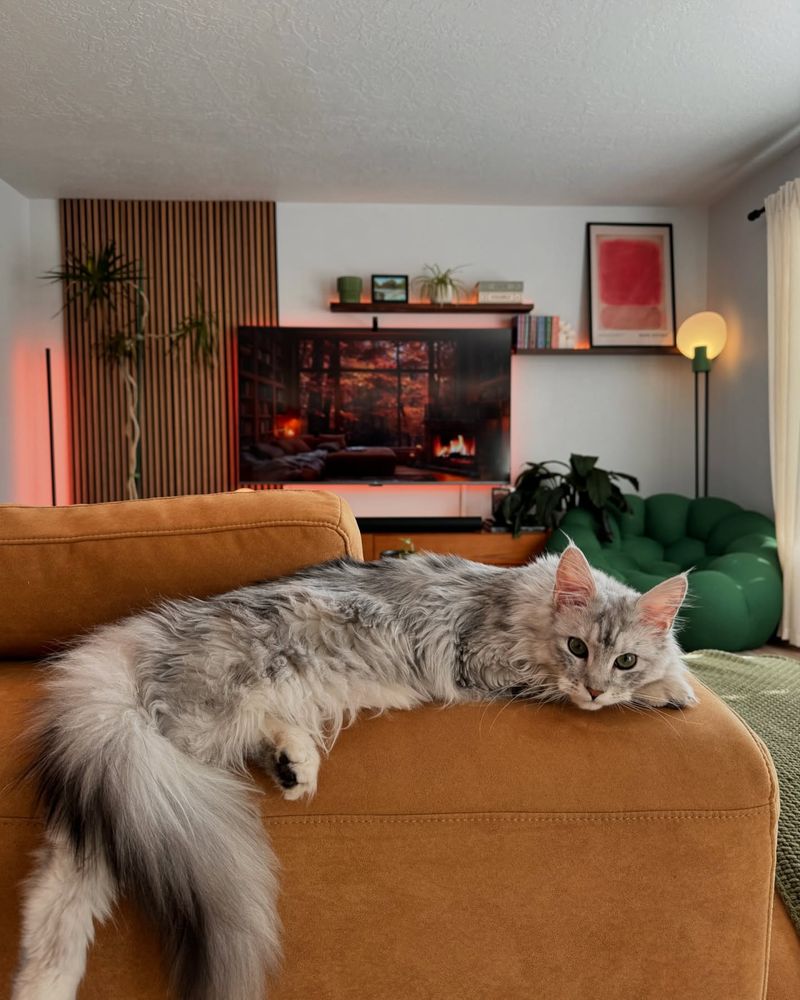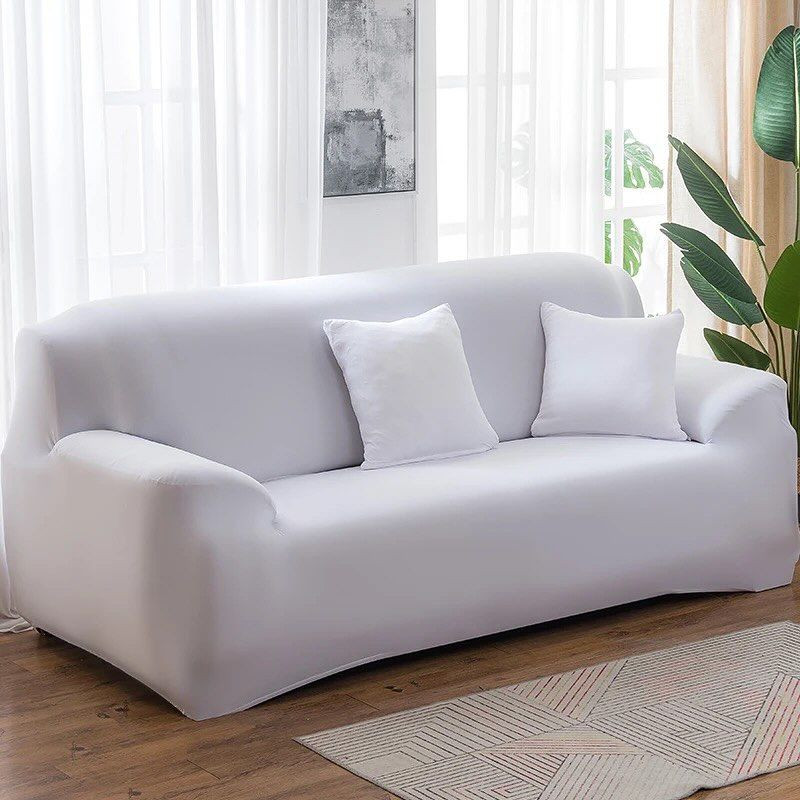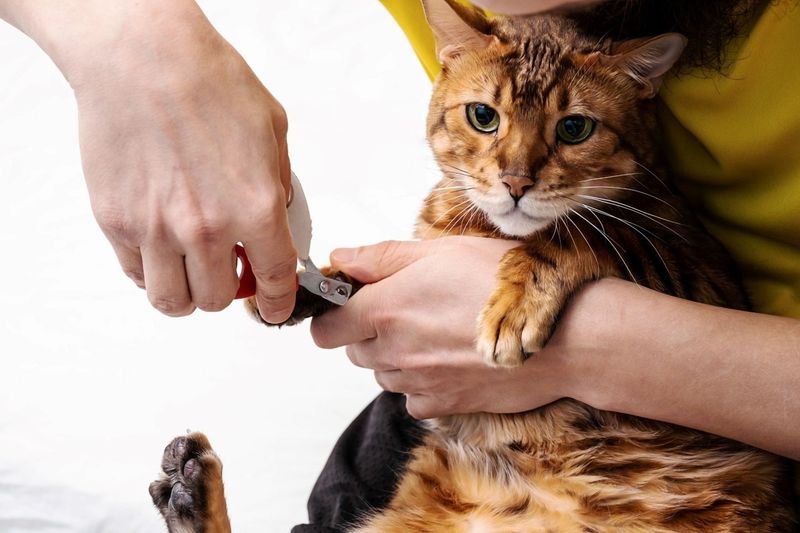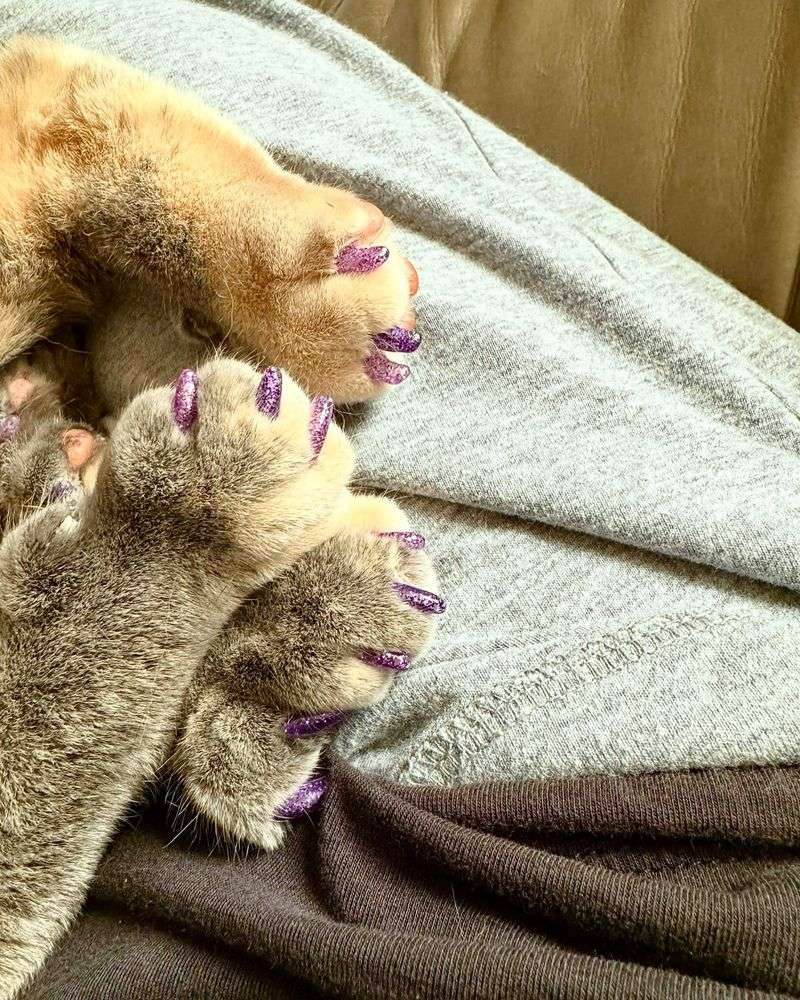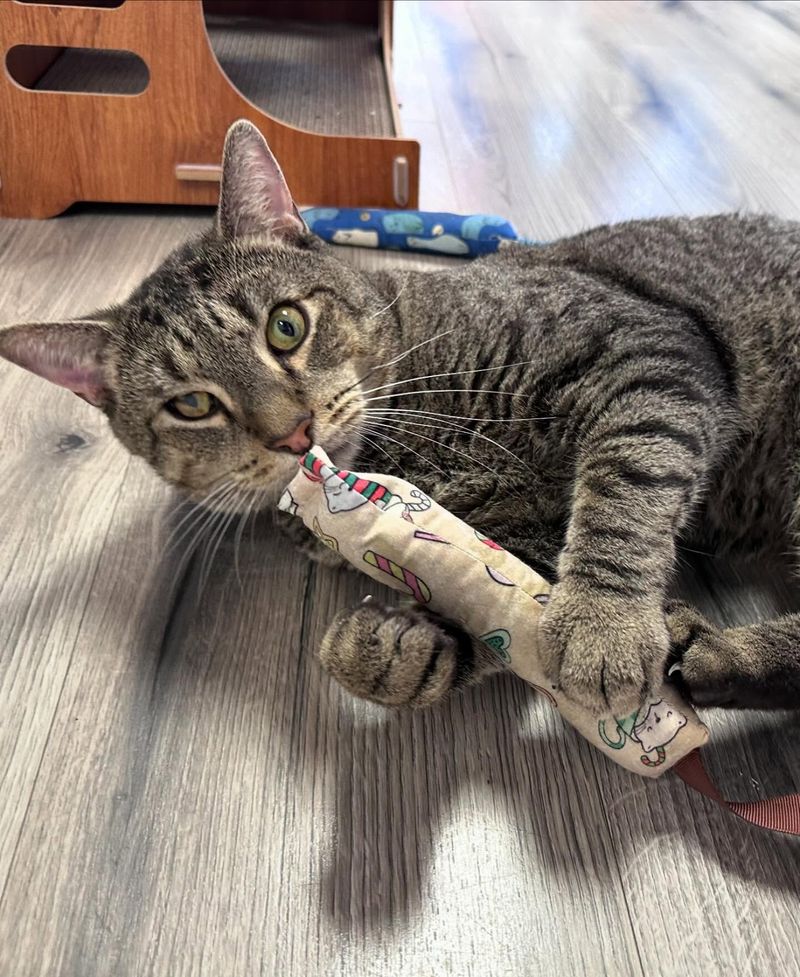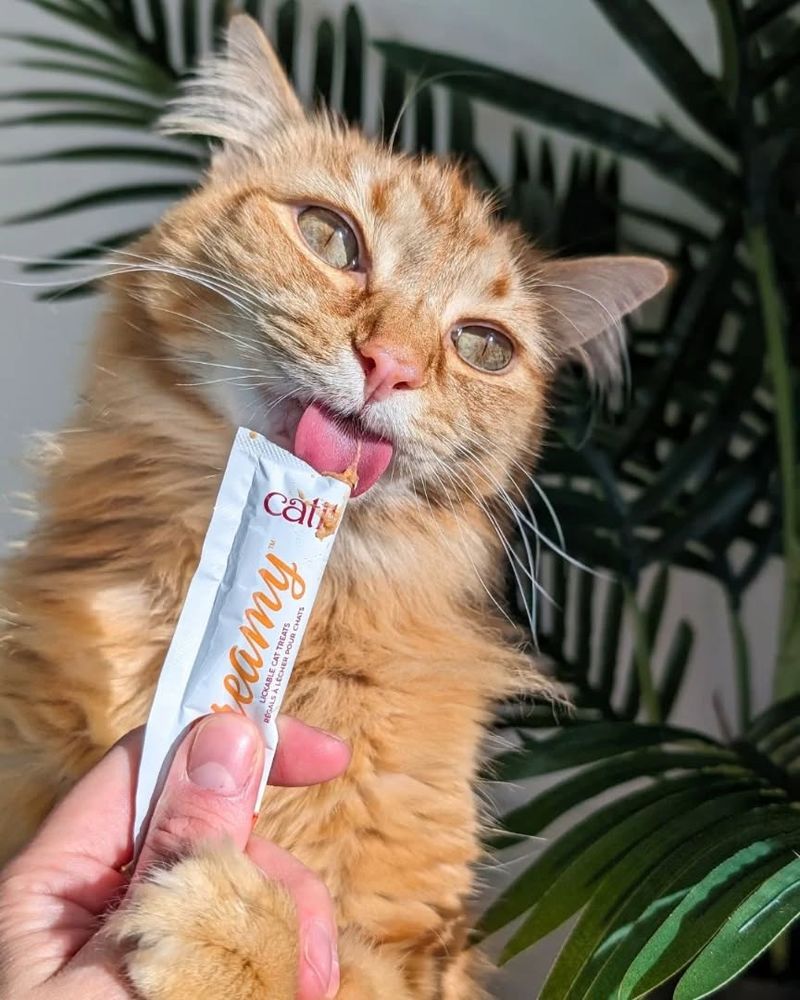📖 Table of Content:
Is your favorite couch under constant attack from tiny, clawed paws? You’re not alone—and your cat isn’t being “bad,” either. Scratching is a completely natural feline behavior that helps cats mark territory, stretch their muscles, and keep their claws healthy. But when that instinct turns your sofa into shredded confetti, it’s time for a smarter solution.
Forget yelling, spraying water, or even considering declawing (which vets strongly warn against). There are kind, cat-friendly ways to save your furniture—and your sanity—without hurting your bond with your furry friend. Backed by veterinarians and feline behavior experts, these proven strategies will help you redirect your cat’s claw power in the right direction.
Let’s dive into the vet-approved fixes that keep both your cat happy and your couch intact.
1. Provide Multiple Scratching Posts
Cats need proper scratching outlets, so give them several options throughout your home. Look for sturdy posts at least 3 feet tall that won’t wobble when your cat uses them.
Materials matter too! Many cats prefer sisal rope or corrugated cardboard surfaces that satisfy their scratching urge. Place posts near furniture that your cat currently scratches and in areas where they spend lots of time.
Remember that cats have preferences just like people do. You might need to experiment with different styles and textures before finding what your particular feline friend prefers.
2. Apply Deterrent Sprays to Furniture
Safe deterrent sprays create scents that cats naturally avoid. Commercial options like Feliway No Scratch or homemade solutions with citrus or vinegar work well when applied consistently to target areas.
Before spraying directly on furniture, test on a hidden spot to prevent damage. Apply daily for at least two weeks while simultaneously introducing appropriate scratching alternatives nearby.
The goal isn’t punishment but redirection. Your cat will gradually associate the couch with unpleasant smells and seek out more appealing scratching surfaces you’ve strategically provided.
3. Install Protective Furniture Covers
Transparent vinyl protectors can shield vulnerable furniture corners while being nearly invisible. Double-sided tape products like Sticky Paws create a texture cats dislike touching, immediately discouraging scratching behavior.
Slipcovers offer another practical solution, especially microfiber versions that resist cat claws better than other fabrics. For targeted protection, try plastic carpet runners placed upside-down (nubby side up) in front of furniture.
Most cats quickly learn to avoid these protected areas, and you can gradually remove the covers once new scratching habits form.
4. Regular Nail Trimming Sessions
Blunt claws cause less damage! Ask your veterinarian to demonstrate proper trimming technique using specialized cat nail clippers. Most cats need trims every 2-3 weeks.
Start slowly with just one or two nails per session if your cat feels anxious. Reward with treats immediately after each successful clip to build positive associations. Special treats reserved only for nail time create powerful motivation.
For wiggly cats, try the “purrito” method – gently wrapping your cat in a towel with just one paw exposed at a time. This calming technique works wonders for many feline patients.
5. Try Soft Plastic Nail Caps
Nail caps like Soft Paws or Soft Claws provide a humane alternative that prevents damage without affecting normal paw movement. These tiny vinyl sheaths glue onto trimmed claws and last about 4-6 weeks before falling off naturally.
The application process takes practice. Most veterinary clinics offer this service, or you can learn to apply them at home with patience and treats. Each cap comes with non-toxic adhesive specifically formulated for pet safety.
6. Create a Consistent Play Routine
Destructive scratching often stems from excess energy or boredom. Scheduled play sessions with interactive toys like feather wands or laser pointers help burn energy that might otherwise be directed at your furniture.
Aim for at least two 10-15 minute play periods daily, especially before times when scratching typically occurs. Many cats scratch more in the early morning or evening, so plan accordingly.
A tired cat is less likely to engage in problematic behaviors! After play, guide your cat to appropriate scratching surface and praise them when they use it correctly.
7. Use Positive Reinforcement Training
Cats respond beautifully to reward-based methods. When you catch your cat using proper scratching surfaces, immediately offer praise and treats. This creates a powerful connection between good behavior and positive outcomes.
Clicker training works particularly well for many cats. The distinct clicking sound marks the exact moment of desired behavior before delivering a reward. Never punish scratching – it creates fear and anxiety without teaching alternatives.
Consistency matters most! Every family member should follow the same approach, rewarding appropriate scratching while gently redirecting inappropriate behavior.
